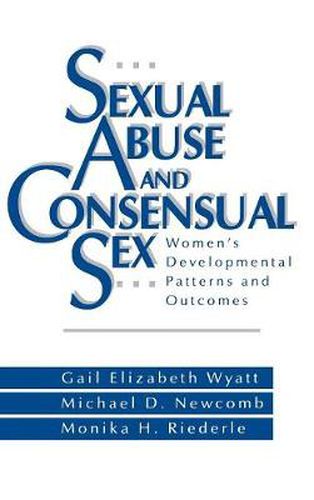Readings Newsletter
Become a Readings Member to make your shopping experience even easier.
Sign in or sign up for free!
You’re not far away from qualifying for FREE standard shipping within Australia
You’ve qualified for FREE standard shipping within Australia
The cart is loading…






A welcome addition to the plethora of books providing insight
into the effects of sexual abuse on women, this volume examines the relationship between sexual experiences and psychosexual functioniong through the lifespan. Using structural equation modeling, the authors aim to provide a comprehensive synthesis of sexual functioning in women. The research emphasis is most welcome in a field notoriously lacking in theoretical constructs: the use of structural equation models does not always simplify this complex topic, but will no doubt prove to be a useful development to the study of outcome variables following sexual abuse. There are considerable methodological advancements provided by Gail Wyatt and her colleagues’ approach to interviewing women about their sexual experiences, both abusive and consensual. Most notably, guidelines and strategies are offered which are helpful when considering the design of such research, and also for clinical practice with adult women survivors of sexual abuse. The focus on AIDS, sexually transmitted diseases and their links to sexual abuse are also useful additions to previous work done in the survivor field. I would recommend this book, with one caveat: the structural equation models are not for the faint hearted.
$9.00 standard shipping within Australia
FREE standard shipping within Australia for orders over $100.00
Express & International shipping calculated at checkout
A welcome addition to the plethora of books providing insight
into the effects of sexual abuse on women, this volume examines the relationship between sexual experiences and psychosexual functioniong through the lifespan. Using structural equation modeling, the authors aim to provide a comprehensive synthesis of sexual functioning in women. The research emphasis is most welcome in a field notoriously lacking in theoretical constructs: the use of structural equation models does not always simplify this complex topic, but will no doubt prove to be a useful development to the study of outcome variables following sexual abuse. There are considerable methodological advancements provided by Gail Wyatt and her colleagues’ approach to interviewing women about their sexual experiences, both abusive and consensual. Most notably, guidelines and strategies are offered which are helpful when considering the design of such research, and also for clinical practice with adult women survivors of sexual abuse. The focus on AIDS, sexually transmitted diseases and their links to sexual abuse are also useful additions to previous work done in the survivor field. I would recommend this book, with one caveat: the structural equation models are not for the faint hearted.